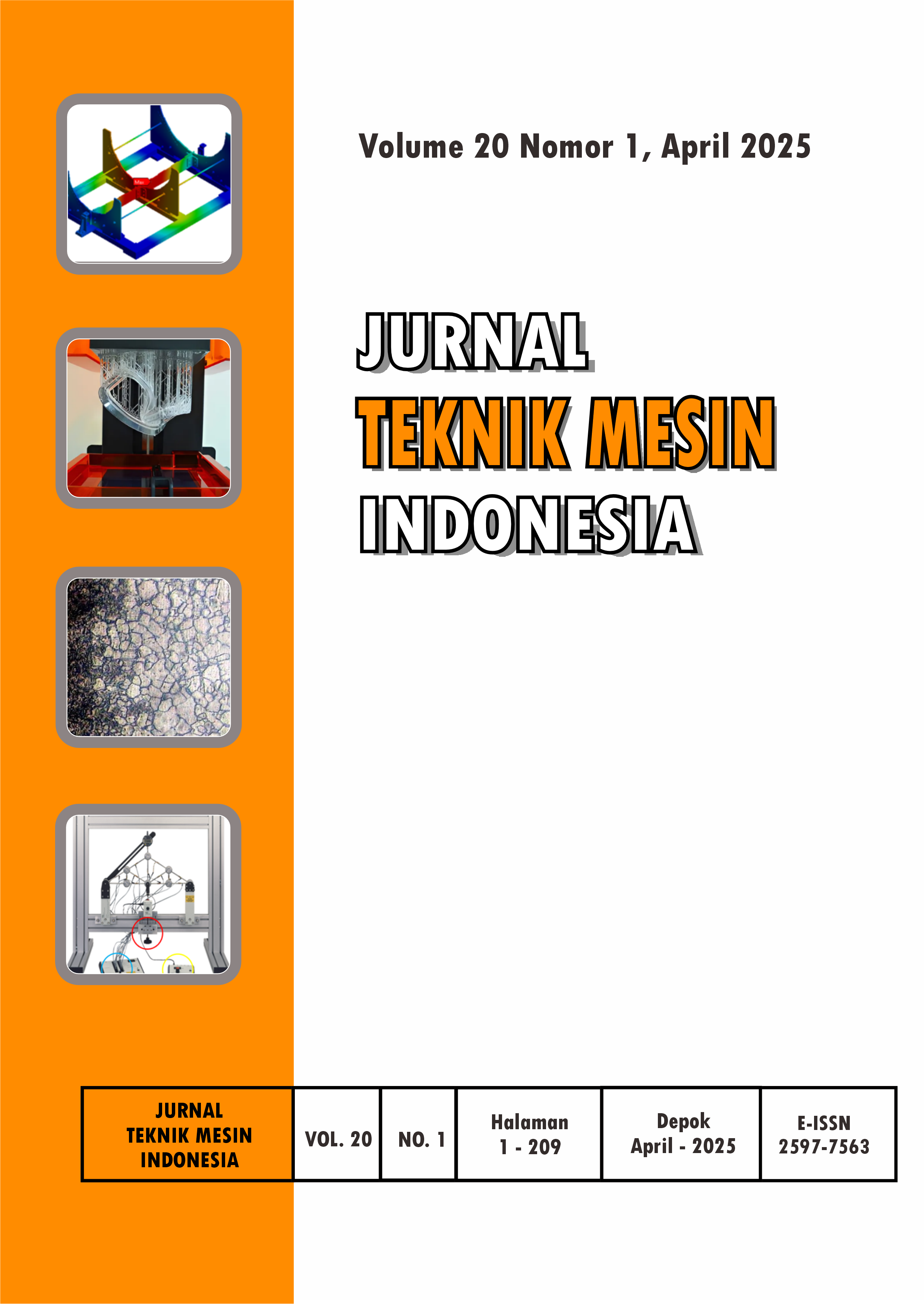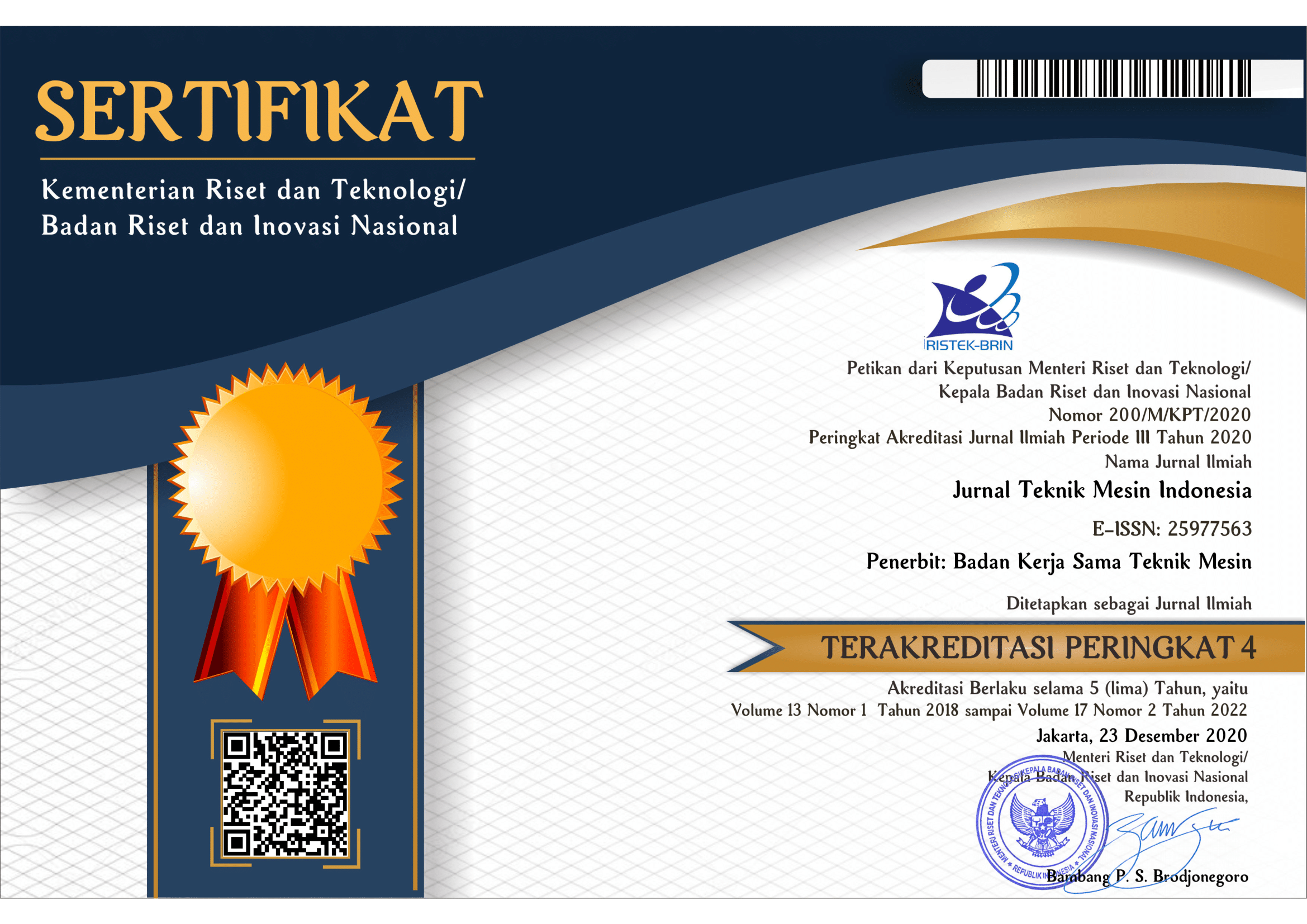Kekuatan pergelangan kaki prostetik pergelangan kaki dengan bahan baja dan aluminium
DOI:
https://doi.org/10.36289/jtmi.v20i1.812Keywords:
computation, leg prosthetic, finite element method, strength of materialAbstract
Leg prosthetics as a device to increase the mobility of people with disabilities need to be supported in their development, especially in terms of comfort. Modifications to make prosthetics more comfortable to use are by utilizing the elastic properties of springs and base plate materials and dampers. This study analyzes the strength of steel and aluminium prosthetic base components in bearing the dynamic load of user's body. The analysis uses computational techniques with the finite element method. Computational results show that the most critical part of prosthetic, i.e. the base, is safe with maximum working stresses of 31,56 MPa for steel and 44,03 MPa for aluminium. Both materials are able to withstand the working stress.










